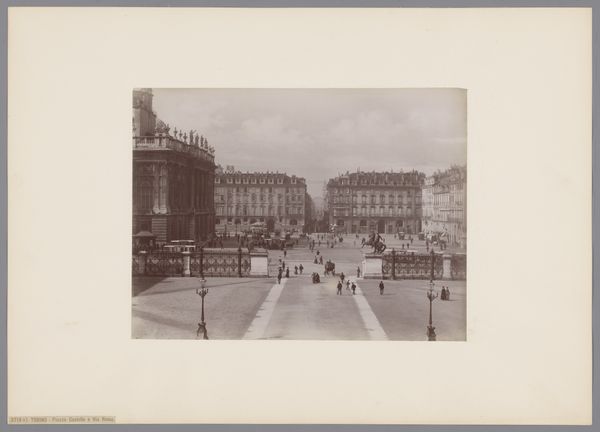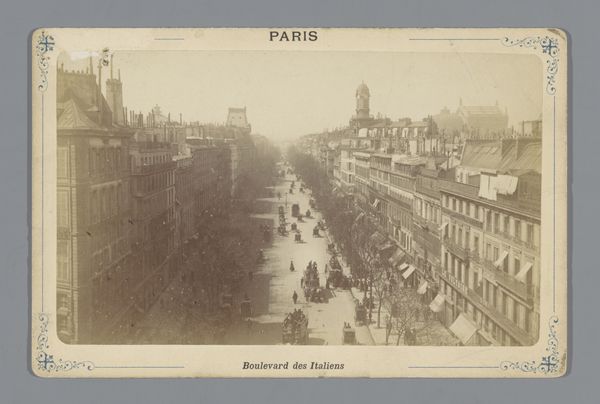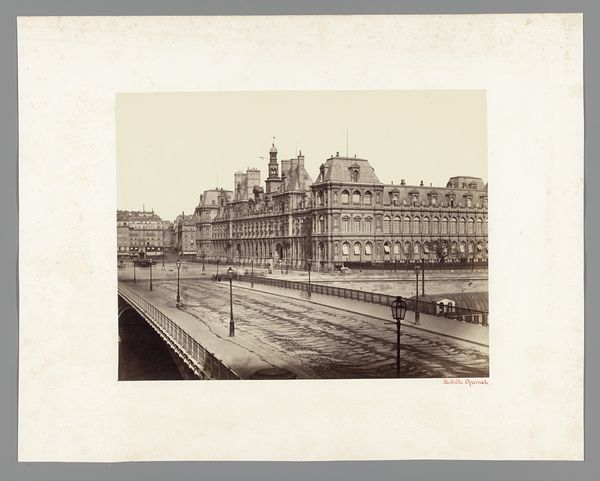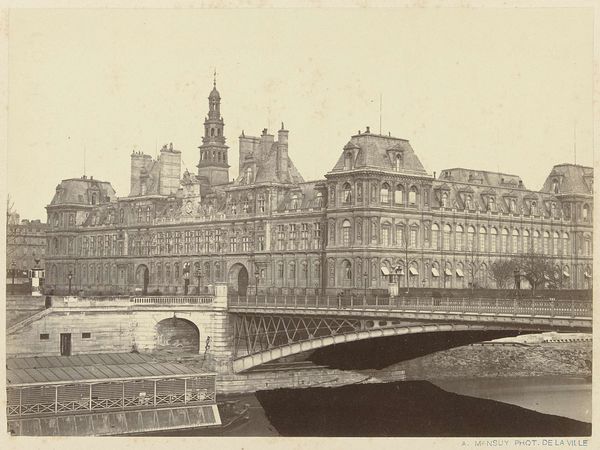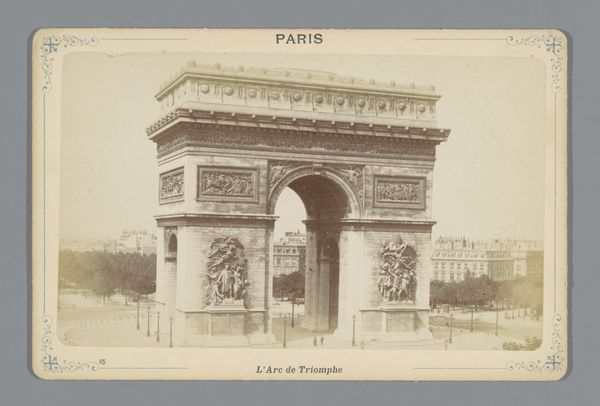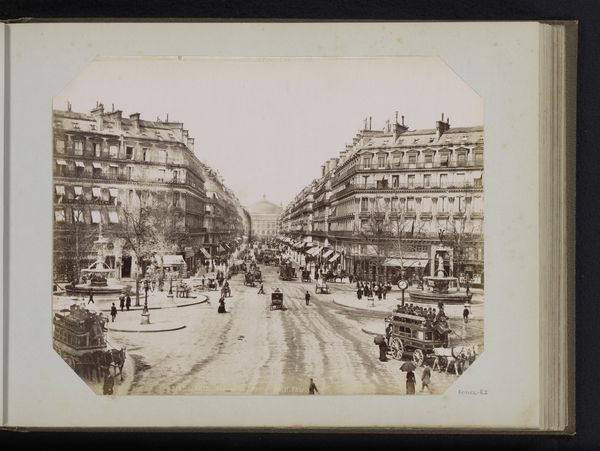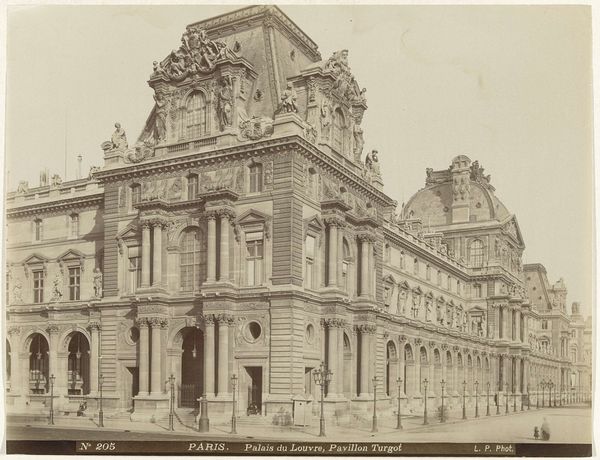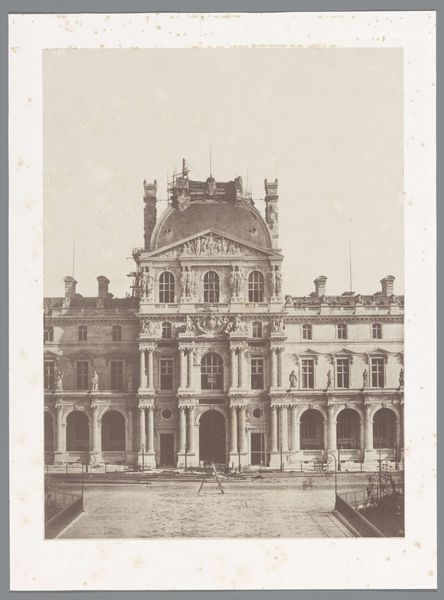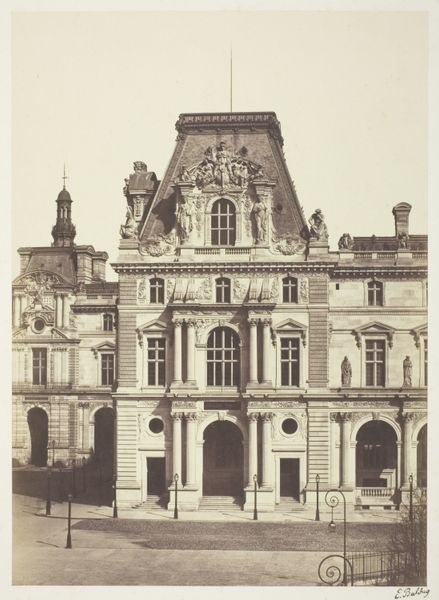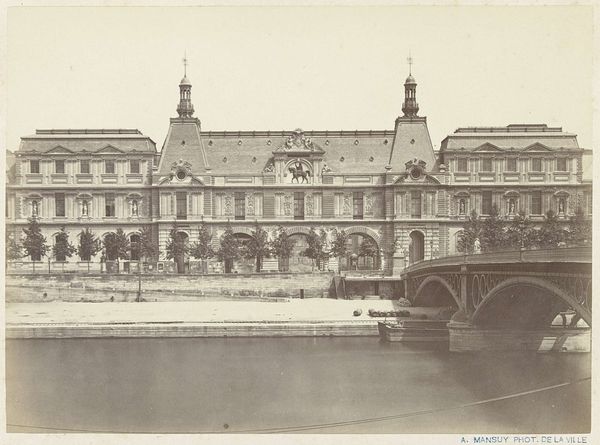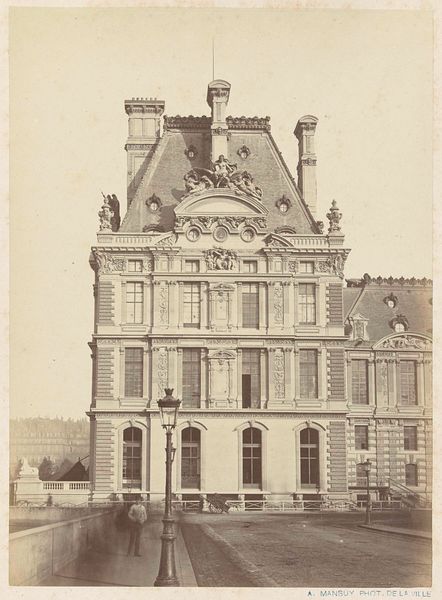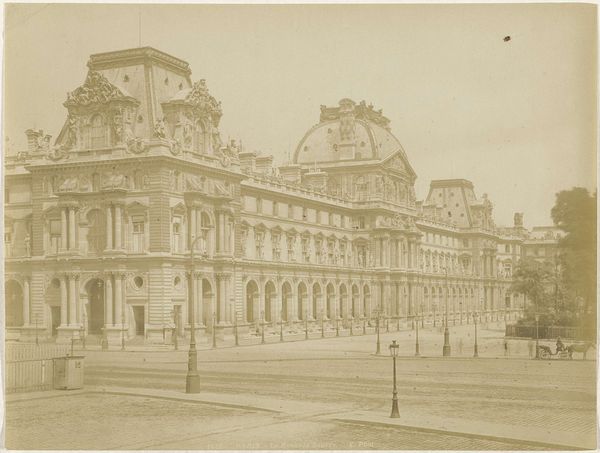
photography, gelatin-silver-print
#
photography
#
orientalism
#
gelatin-silver-print
#
cityscape
#
realism
Dimensions: height 107 mm, width 164 mm
Copyright: Rijks Museum: Open Domain
Curator: This is a photograph of the Hôtel de Ville in Paris, taken sometime between 1870 and 1900 by Étienne Neurdein. It’s a gelatin-silver print. Editor: My first impression is one of almost ghostly grandeur. The soft, sepia tones give it a sense of timelessness, yet there’s something undeniably imposing about the scale of the building. Curator: That feeling of grandeur is definitely intended, it’s the seat of local government, of course. I see echoes here of how civic power has historically presented itself, linking directly back to ideas about Roman virtue and urban planning, but also gesturing towards emerging capitalist hierarchies. Editor: Absolutely. And what about the specific architectural and decorative motifs—all the classical references? I keep thinking of the symbolism embedded within that facade: those figures represent concepts and values important to civic life in the French Republic. Are they guardians, representations of ideals, or something else entirely? Curator: Both, and neither. Looking at this through a contemporary lens, though, I have to acknowledge that who these symbols represent, who gets to be a guardian, an ideal citizen – that all carries a heavy historical and often exclusionary weight. Whose Paris is represented in this image? Editor: A valid point. And looking at the emptiness of the square, it’s hard not to imagine the sounds of that city suppressed beneath a century’s worth of history. But even in its stillness, I am so curious about the individuals who populate this cityscape and move within this constructed order. Curator: True, the scale here is human but dwarfed. Neurdein captured a city undergoing massive transformation – physically and politically – and one of the fascinating aspects of this picture is how that plays out in these spatial dynamics, hinting at evolving urban realities in this specific time. Editor: Thinking about this image in terms of what’s visible, I’m now curious about what’s hidden – the stories that can’t be gleaned just by studying iconography, but that ripple outward from it and through generations. Curator: I agree, this image reminds us to always interrogate not just the power that buildings and monuments represent, but also who that power serves, both then and now.
Comments
No comments
Be the first to comment and join the conversation on the ultimate creative platform.
